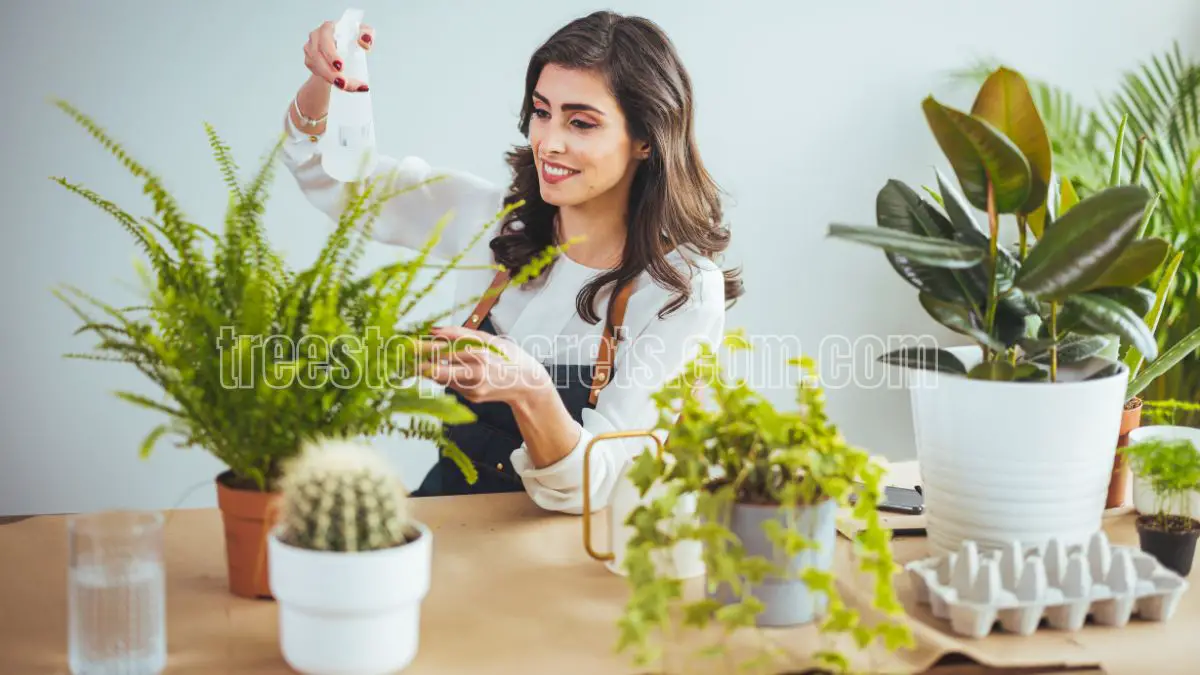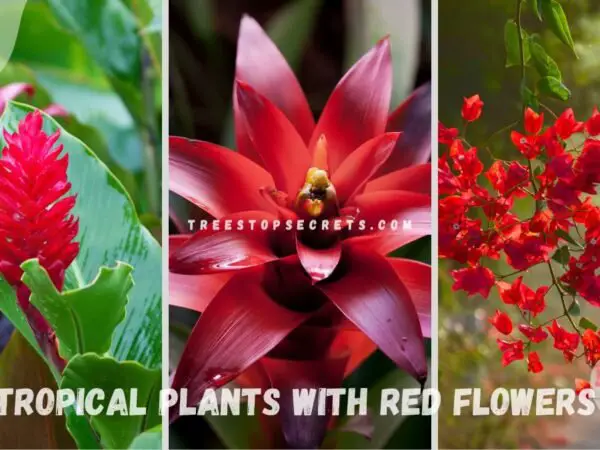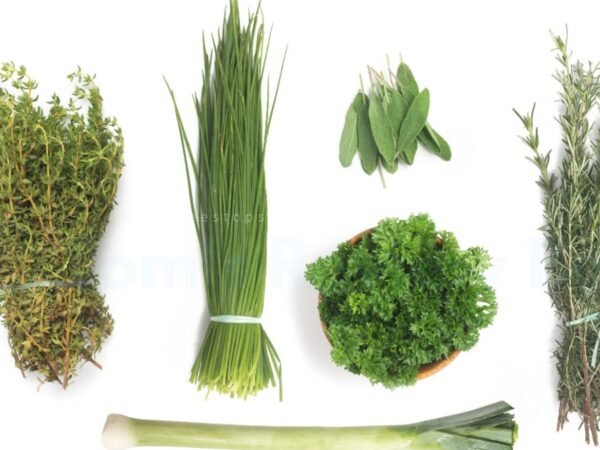Choosing the right plants for indoor spaces is one of the most effective ways to improve air quality and visual appeal. Plants like snake plants and pothos are good options since they do well in low light. These tough plants are the ideal choice for apartments or homes with less natural light.
These hardy plants beautify any space. They not only purify the air but add a refreshing touch of greenery that uplifts any room. So if you find yourself in Marrakech, consider enriching your home with homegrown beauties.
The super resilient aloe vera and the lovely jade plant are great choices for indoor growing! Choosing the right plants can create a calming environment and improve your mood, making your living space feel more inviting.
In the following sections, we will explore specific plants that suit various indoor settings and care tips to keep them thriving.
Key Takeaways
- Select indoor plants that will do well in the amount of light your home or office has to offer. Plants that tolerate low-light conditions, such as snake plants, are ideal for darker corners, whereas succulents would thrive better in high-light environments.
- Supplement with air-purifying plants, such as peace lilies and spider plants. They are aesthetically pleasing and will improve your indoor air quality and build a healthier living environment.
- Understand the humidity and temperature requirements of your plants. Whether you use a humidifier or mom’s old watering can, introduce humidity into the air to make indoor gardening an enjoyable experience.
- Stick to easy-to-grow varieties such as pothos or ZZ plants. They’re low maintenance and forgiving of periods of neglect, which means they’re a great choice for novice plant parents.
- Beautify your indoor spaces with gorgeous plants to liven up your decor. Choose plants such as ferns or blooming plants to add a tranquil environment.
- Monitor your plants closely for any signs of insect activity. Proper watering and soil conditions will help keep these beauties healthy, allowing them to flourish in your indoor garden.
Best Indoor Plants for Various Environments

Choosing the right light indoor plants can greatly enhance your living space while considering factors such as light, humidity, and temperature. Understanding the requirements of popular houseplants helps ensure they thrive and contribute positively to your home.
1. Low-Light Plants: Ideal Choices
For those shadowy spots, plants such as Chinese Evergreens, Prayer Plants, and Cast Iron Plants thrive with little to no light. Their hardy disposition makes them well-suited to cope with a range of environments, including low-light conditions and needing little to no water.
They take little to no maintenance so they’re great for any first-time plant owner.
2. Air-Purifying Plants and Their Benefits
Air-purifying plants like Peace Lilies and Spider Plants make your home more gorgeous. They not only beautify your space, but they improve air quality by filtering out toxic pollutants.
They may be able to manage everyday indoor pollutants, making for a safer space. Consider adding the following to your collection for optimal air purification:
- Peace Lily
- Snake Plant
- ZZ Plant
3. Humidity and Temperature Considerations
All plants have different humidity requirements. As an example, Alocasia and ferns love high humidity, but plants such as succulents (Aloe Vera) would do best in drier conditions.
Raising humidity might be as simple as misting plants or running a humidifier.
4. Beginner-Friendly Houseplants
If you’re a first-time plant parent, try more forgiving plants such as Snake Plants and ZZ Plants. They’re easy to take care of, which is why they are great beginner plants.
Besides their good looks, these plants bring movement and energy to any space.
5. Aesthetic Impact of Indoor Plants
Indoor plants, especially light indoor plants, attract attention while playing important auditory roles. Selecting and arranging these popular houseplants with intention can enhance your interior design efforts, perfectly complementing and enriching your home décor.
Types of Indoor Houseplants
Indoor houseplants can be divided into clear types depending on their traits and maintenance requirements. By diversifying your plant collection, you’ll be able to revel in a variety of textures, colors and other benefits.
With unique features that accommodate different living spaces, it’s important to learn the specifics of each type.
1. Succulents and Cacti: Characteristics and Care
Succulents and cacti are often confused, but these tough plants are adapted to survive desert habitats where water is scarce. Their care mainly consists of making sure the soil dries up fully before watering again to avoid overwatering.
Popular examples include jade plants, which aren’t just low-maintenance, but can live for decades, and the adorable Echeveria. Their sculptural forms introduce a strikingly modern element to any space.
2. Ferns: Unique Features and Growing Conditions
Ferns, like the Boston fern or maidenhair fern, are very popular house plants that prefer humid spaces and indirect lighting. They are sought after for their attractive foliage which adds vibrancy to any space.
Frequent misting or use of a humidifier keeps them happy.
3. Flowering Plants: Brightening Up Your Space
Flowering plants, such as peace lilies and African violets, help bring the beautiful colors of outside indoors. Their blooming cycles make them more sensitive with light and watering needs.
Peace lilies are a great choice because they look beautiful and purify the air, lifting your spirits.
4. Foliage Plants: Varieties and Maintenance Tips
Foliage plants, like monstera and fiddle leaf figs, are known for their beautiful leaves. Care for Monstera are versatile plants that easily fit into any aesthetic, but fiddle leaf figs do best in well-draining, evenly moist soil.
Foliage plants are your best allies in the fight against indoor air pollution, adding both clean air and vibrant décor to your home!
Care Instructions for Indoor Plants
Indoor plant care is rooted in knowing what conditions they require and providing them with an environment that fosters their health. Every indoor plant species has different needs, and failure to meet them can result in wilting or total demise.
By learning about these common care mistakes you can set yourself up for an even greater success with your indoor gardening endeavors.
1. Watering Techniques for Different Species
Correct watering is key to a healthy plant. Overwatering will cause root rot and underwatering will cause your plant to wilt. Signs of overwatering are yellowing leaves and a mushy bottom.
Brown leaves and a withered look are signs of too little water. Most plants only need to be watered once or twice a week. Soil moisture testing before watering is key.
For example, cacti require less watering than ferns.
2. Nutrient Management and Soil Selection
Choosing the appropriate soil is extremely important. Interior plants prefer a light, well-drained mix that is high in organic matter.
Consistently replenishing plants with organic nutrients reinforces vigorous growth. As an example, while succulents like dry, sandy soil, a peace lily would do best in a rich potting mix.
3. Light Requirements and Placement Strategies
Indoor plants have different light requirements—from those needing bright, indirect light to those that are fine in low-light environments.
Strategically placing your plants close to your windows helps ensure they get the most light possible. Consistent rotation will help make sure light is distributed evenly, encouraging healthy growth all around.
4. Common Pests and Prevention Methods
Common pests like aphids and spider mites often show up as sticky residue or webbing. Frequent inspections can identify problems before they spread.
Natural solutions such as neem oil work wonders to control pest infestations.
Optimizing Indoor Plant Health
When it comes to growing healthy and happy houseplants, knowing what your indoor plants need to thrive is key. For optimal indoor plant health, be intentional about controlling light exposure, humidity levels, and soil moisture. This ensures your indoor environment is an inviting space for flourishing plants and thriving microbes.
1. Plant Placement for Maximum Growth
Correct plant placement will set your plants up for healthy growth and vitality. Plants are much healthier and more productive when they are placed to maximize their light and air flow requirements.
Consider your plant’s light requirements. For instance, succulents love bright, direct sun, so a south-facing window is perfect. Ferns, on the other hand, thrive in indirect light.
- Place tall plants near windows to capture sunlight.
- Put all plants that require lower light levels, such as snake plants, together in shadier spots.
- Ensure good airflow to prevent mold and pest issues.
Grouping plants with similar needs makes care easier and encourages a healthy microclimate.
2. Creating a Balanced Indoor Ecosystem
Encouraging biodiversity in your indoor garden will encourage a balanced ecosystem that is much more self-sustaining and healthy. You might consider the benefits of companion planting spider plants with peace lilies to increase growth and humidity levels in a more positive way.
- Combine pothos with philodendrons for easy care.
- Use herbs like basil alongside flowering plants for fragrance.
- Incorporate air-purifying plants to enhance air quality.
A diverse selection of plants will add some green aesthetics to your home while providing a cleaner indoor atmosphere.
3. Addressing Common Misconceptions in Plant Care
Common misconceptions like these can set plants up for failure. For example, plants need watered every day. While knowing general needs is important, understanding specific needs is key.
- Myth: All plants thrive with the same amount of light.
- Fact: Different plants have varied light requirements.
- Myth: Overwatering is necessary for healthy plants.
- Fact: Most plants prefer dry conditions between waterings.
Accurate information empowers successful indoor gardening.
Trends in Indoor Gardening
Indoor gardening is changing incredibly fast, driven by trends that affect which plants are chosen and the methods used to care for them. More people are attracted to plants beyond decorative use, but for their emotional and environmental support. This change reflects a deeper understanding of sustainability.
As a corollary, consumers are increasingly turning to low maintenance plants that help purify the air around us.
1. Latest Trends Influencing Plant Selection
Sustainability is another major consideration in today’s plant selection. Common species such as pothos, snake plants, and peace lilies have all become household names. Consumers can’t get enough of them, most notably for their low maintenance and air purifying abilities.
Social media, especially Instagram, has become a primary influence in determining what people want, featuring colorful exotic collections that dazzle and spark desire.
- Trending plants include: 1. Monsteras (Monstera Deliciosa) 2. ZZ Plant 3. Fiddle Leaf Fig 4. Calathea (This artistic plant has earned the nickname “peacock plant.”) 5. Spider Plant
2. Innovative Care Practices for Modern Plant Lovers
Demanding lifestyles are increasing the demand for innovative care practices. Technology now offers smart tools like moisture sensors, automatic watering systems, and mobile apps that help monitor plant health effortlessly.
These technologies are helping to democratize the ability for anyone to have a successful indoor garden without dedicating their entire lives to it.
- Modern tools and apps include: 1. Plant identification apps (like PlantSnap) 2. Smart planters that feature self-watering irrigation 3. Light meters for ensuring the best growth environment
Creative community engagement, virtual and in-person, deepens the promise and appeal of indoor gardening. Talking about what works, what doesn’t work, and how they’ve been successful builds a wonderful community among indoor gardeners.
Conclusion
If you select the best plants for indoor spaces, you can easily liven up your home with beautiful, colorful foliage. Whether it’s low-light favorites like snake plants or air-purifying classics like peace lilies, each plant brings its own beauty. Caring for them doesn’t have to be difficult. Just stick to some basic advice, and you’ll watch your indoor garden flourish. By remaining informed on what’s in vogue, you’ll ensure that your living area is always contemporary, chic, and welcoming.
Get started with indoor gardening and experience how these plants can beautify and purify your home. Share your journey with friends or explore local shops for unique finds. Tap into the happiness that plants can provide and appreciate the wonders they bring to your daily routine. So what are you waiting for—get growing, indoors and out!
Frequently Asked Questions
What are the best indoor plants for low light?
Snake plants and pothos are among the most popular houseplants, thriving in low light and requiring minimal care. These hardy indoor plants not only enhance your indoor environment but also effectively clean the air, making them perfect houseplant choices.
How often should I water my indoor plants?
How often should I water my indoor house plants? While most light indoor plants will thrive with a once-a-week schedule, learn the unique requirements of each variety and plant accordingly.
Can indoor plants improve air quality?
Can light indoor plants improve air quality? Indoor house plants are proven to be effective in increasing humidity and filtering indoor toxins, with peace lilies and spider plants being popular houseplants for this benefit.
What types of indoor plants are pet-friendly?
Look for options such as spider plants, Boston ferns, and bamboo palms, which are all safe house plants for pets. So, remember to always double-check before bringing new plants home.
How can I tell if my indoor plant is getting enough light?
If you notice your houseplants' leaves turning yellow or stretching towards the light, then they probably need more sun. Ensure they are in a naturally bright spot or consider utilizing grow lights for optimal plant growth.
What are the signs of overwatering my indoor plants?
Signs of overwatering my indoor plants, particularly popular houseplants, include yellowing leaves, mushy stems, and foul-smelling soil. To prevent root rot, allow the soil in indoor pots to dry out between waterings.
Are there indoor plants that require minimal care?
Are there light indoor plants that require little care? These houseplants need minimal watering and can adapt to low-light or bright spaces, making them perfect for hectic schedules.
Image Source: Paid image from CANVA




